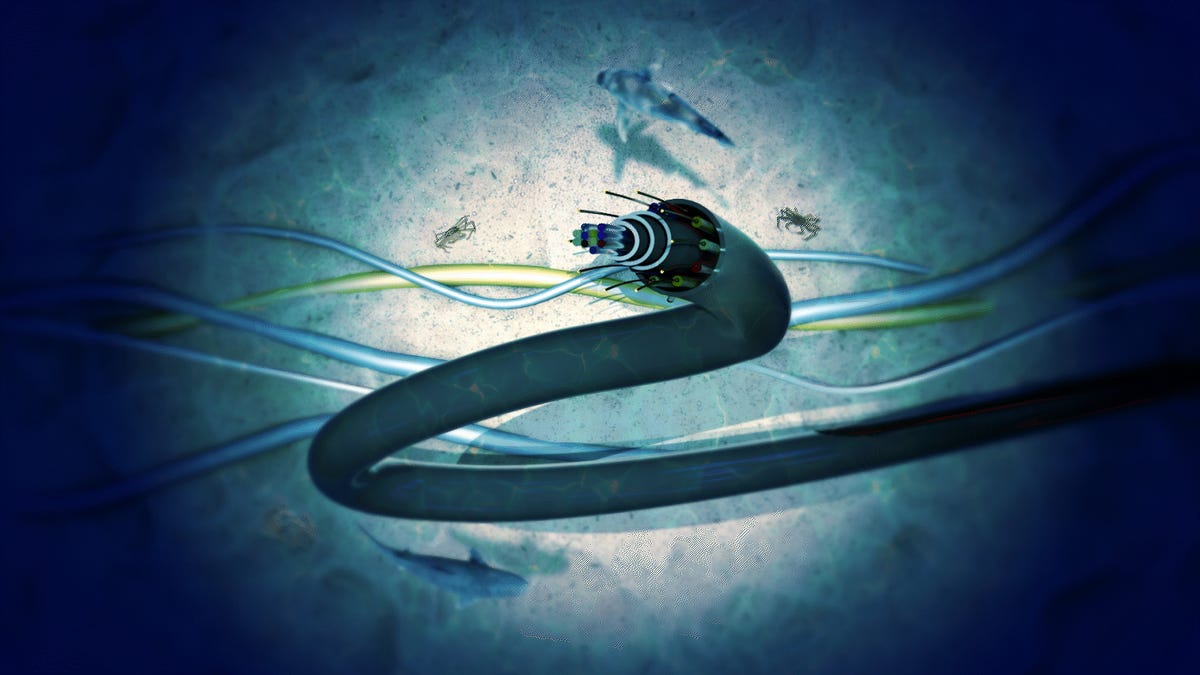The Intricate World of Subsea Internet Cables Unveiled
Kernekoncepter
The author highlights the critical role of subsea cables in global communication networks, emphasizing their technological advancements and vulnerabilities.
Resumé
Subsea internet cables are essential for global communication, with high-tech capabilities and historical roots. They are crucial for hyperscalers' data demands and economic growth, despite facing risks like sabotage and natural disasters. The network is expanding to remote locations, enhancing reliability and speed. The geopolitical tensions surrounding subsea cables add complexity to their installation and maintenance. Efforts are underway to enhance resilience through geographic diversity and redundancy, ensuring a robust global communication infrastructure.
The Secret Life of the 500+ Cables That Run the Internet
Statistik
The fastest transatlantic cable called Amitié can carry 400 terabits of data per second.
Two-thirds of traffic comes from hyperscalers, with data demands surging 45% to 60% per year.
TeleGeography estimates $10 billion will be spent on new subsea cables from 2023 to 2025 worldwide.
Citater
"The whole network of undersea cables is the lifeblood of the economy." - Alan Mauldin, TeleGeography analyst
"If that drops, you lose your mind." - David Coughlan, CEO, SubCom
Vigtigste indsigter udtrukket fra
by Stephen Shan... kl. www.cnet.com 02-21-2024
https://www.cnet.com/home/internet/features/the-secret-life-of-the-500-cables-that-run-the-internet/
Dybere Forespørgsler
How do geopolitical tensions impact the installation and maintenance of subsea cables?
Geopolitical tensions can significantly impact the installation and maintenance of subsea cables. For example, countries may impose restrictions or regulations that complicate the process of laying new cables or conducting repairs. Cabotage laws in certain nations require work to be done by sovereign ships, leading to delays and increased complexity in cable installations. Additionally, political conflicts between countries can result in the rerouting or blocking of cable projects that directly connect regions under tension. The US blocking three cables linking China and the US is a clear example of how geopolitical tensions can influence the development of subsea cable networks.
How does the expansion of landing sites contribute to the overall robustness of global communication infrastructure?
The expansion of landing sites plays a crucial role in enhancing the resilience of global communication infrastructure. By diversifying landing locations for subsea cables, operators reduce the risk associated with natural disasters or sabotage affecting a single geographic area. For instance, Hurricane Sandy's impact on transatlantic cables landing in New York and New Jersey highlighted the vulnerability of concentrated landing points. With more landing sites spread across different regions like Massachusetts, Virginia, South Carolina, and Florida, operators create redundancy in communication pathways. This geographical diversity ensures that even if one area experiences disruptions, alternative routes are available to maintain connectivity.
What measures can be taken to enhance the resilience of subsea cable networks against sabotage or natural disasters?
Several measures can be implemented to bolster the resilience of subsea cable networks against sabotage or natural disasters:
Geographic Diversity: Building cables along diverse routes and connecting them to multiple landing sites reduces dependency on specific pathways and minimizes the impact of localized incidents.
Redundancy: Establishing redundant connections between key locations ensures that if one cable is damaged, traffic can be rerouted through alternate paths without significant disruptions.
Enhanced Monitoring: Implementing advanced monitoring systems with sensors along cables can detect potential threats early, enabling prompt responses to mitigate risks.
Security Protocols: Strengthening security measures around critical infrastructure points such as landing stations and connection hubs helps prevent unauthorized access or tampering.
Collaborative Agreements: Forming partnerships among cable operators to share capacity and resources enhances network resilience by providing backup options during emergencies.
Investment in Technology: Embracing innovative technologies like hollow fibers for reduced latency or multi-core fibers for increased data capacity improves network performance and reliability.
By adopting these strategies, subsea cable networks can better withstand challenges posed by deliberate attacks or unforeseen natural events, ensuring continuous global connectivity for digital communications and commerce.
0
